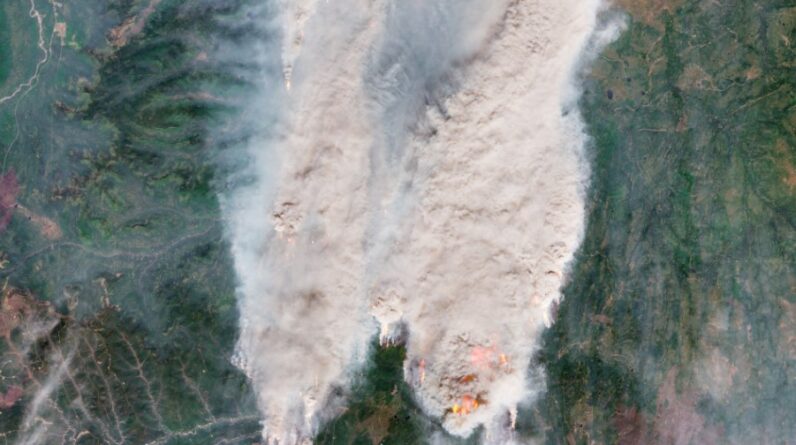
[ad_1]
This image, captured by the Copernicus Sentinel-2 mission on 18 May, shows one of the fires – the fire at Donnie Creek, British Columbia.
Source – ESA, Copernicus Sentinel 2
Massive wildfires in Canada have already spewed out twice the smoke emissions than the previous whole-year record.
The shocking data was released Thursday by the European Union’s Copernicus Atmosphere Monitoring Service (CAMS).
CAMS said in a statement that “from 1 January to 31 July, accumulated carbon emissions from wildfires across Canada totaled 290 megatonnes. This is already more than double the previous record for the year as a whole and represents over 25 percent of the global total for 2023 to date.”
This year’s wildfire season has been the worst on record in Canada, with more than 13 million hectares (roughly 32 million acres) burning so far — scorching an area larger than the size of Portugal or South Korea.
Canada is home to nearly 10% of the world’s forests. Those same forests, however, are now the fuel to what is perhaps the most intense wildfire season in the nation’s history, if not the most significant wildfire crisis around the globe.
“In recent years we have seen significant wildfires in the Northern Hemisphere, but this year’s fire activity in Canada is highly unusual,” said Mark Parrington, senior scientist at CAMS, reports CNBC News.
“The weather has played a part, with warm and dry conditions increasing the flammability of vegetation and increasing the risk of large-scale fires. We support users in mitigating the impacts through monitoring the fire activity and intensity, and the emitted smoke,” Parrington said.
There are currently 1,036 active fires burning nationwide, and 663 of those are classified as “out of control,” according to data in a real-time dashboard operated by the Canadian Interagency Forest Fire Centre.
Enormous plumes of smoke have choked the air in Canada and the neighboring United States, affecting more than 100 million people and at times disrupting flights and forcing the cancelation of outdoor events.
Meanwhile, The Hill reports that the worst may be yet to come, as the northern hemisphere’s wildfire season typically peaks across July and August, according to CAMS.
For Canada, this means the blazes could continue for weeks or even months to come.
[ad_2]
Source link






